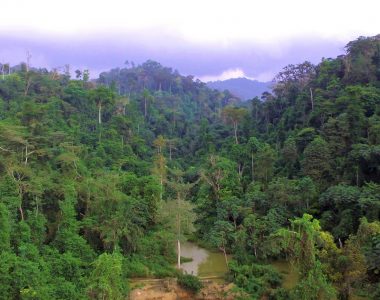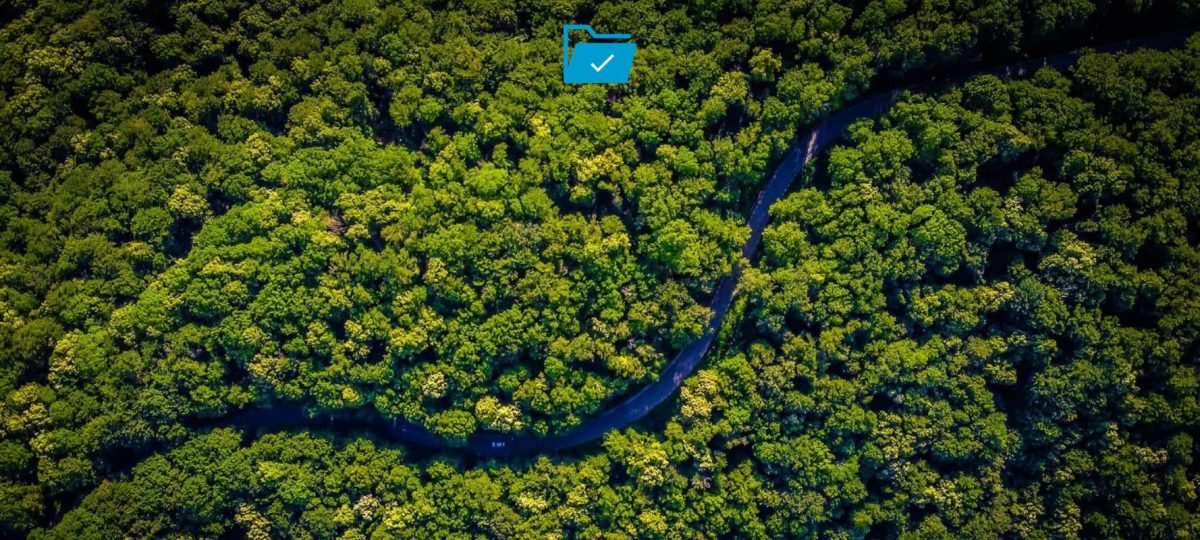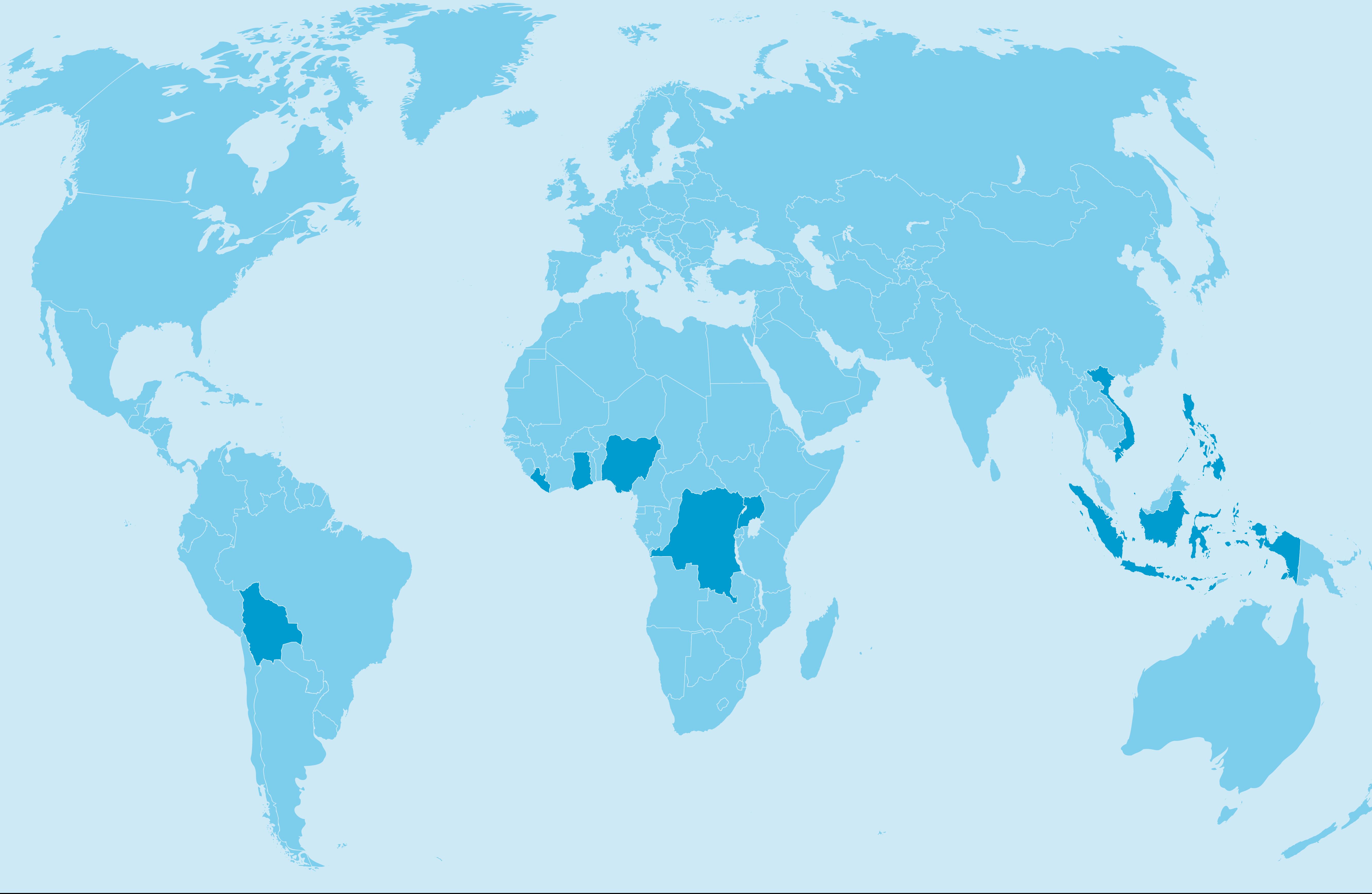Tropical rainforests are the most biologically diverse terrestrial ecosystems in the world. They provide clean water, fertile soil for food and ensure a stable climate. Forests are essential for the livelihoods of local and indigenous communities. It is therefore of great importance that forests are preserved. Through its Forested Landscapes for Equity programme, the Green Livelihoods Alliance (GLA) aimed for the sustainable and inclusive governance of forested landscapes.
Headerphoto: (c) IUCN NL
The Forested Landscape for Equity programme’s ultimate goal was to reduce deforestation and increase respect for the rights of forest-dependent communities. The work of the programme’s partners focused on four key conditions that are required in order to achieve inclusive and sustainable governance of forested landscapes.
The four key conditions for inclusive and sustainable forest governance
- Communities have access to and benefit from land and forest resources and are thus more inclined to protect forests and use them sustainably.
- Communities have access to decision-making over their land. The governance of forested landscapes can be inclusive and sustainable only if the interests of all stakeholders are taken into account, including the interests of marginalized forest-dependent groups, such as indigenous people, youth and women.
- Sustainable practices [1]Examples of sustainable practices that the programme promoted are agroforestry systems, sustainable harvest of Non-Timber Forest Products (NTFPs) and Payment for Ecosystem Services (PES). are in place that allow current and future generations to benefit from ecosystem services such as climate resilience, food security, water provisioning and biodiversity.
- Global drivers of deforestation and climate change are addressed.

Strengthening capacities
The Forested Landscapes for Equity programme contributed to strengthening Southern partner organisations’ capacities 1) to generate and use verified evidence, 2) to develop clear and strategic interventions for lobby & advocacy and communication, and 3) to engage with other CSOs and citizen networks, as well as engaging with the public sector to a certain extent.
The programme has also helped to improve understanding and strategies on gender, inclusion and Indigenous Peoples and Local Communities (IPLCs). One example is the ReSisters Dialogue, which our partner LILAK organised for women from rural and indigenous communities from different countries. During this event, they discussed the challenges and threats they face in defending their access to natural resources and shared valuable strategies, lessons and insights.
The clearest result of the programme on the level of gender and inclusivity is that (IPLC) women increased their decision-making power at community level and beyond, by engaging in decision-making bodies and taking leadership roles at all levels.
Lobby and advocacy success
At landscape, national and international level, many lobby and advocacy outcomes were achieved. The programme’s partners have been able to influence public opinion and build public pressure effectively. For example, in Bolivia, a country which is severely affected by forest fires, partners were able to put the protection of forests against agro-extractivism on the public agenda. This public awareness and debate has contributed to changes in forest governance, which ultimately contributes to sustainable management. On the Island of Mindanao in the Philippines, for example, a coalition of local civil society organisations mobilized tax funds to ensure more sustainable land use management of a river basin.
In all countries as well as at international level, the programme has influenced dozens of policies and practices related to sustainable forest governance, through improved land, forest, biodiversity, energy and agro-commodity laws, for example by increasing the number of social forestry permits in Indonesia.
Delaying destructive development projects
The programme’s partners contributed to delaying large-scale destructive projects, e.g. mining in Atewa forest (Ghana) and the building of the Kaliwa Dam (Philippines). Although both projects are still threatening the landscape, the delays and increased national and international attention, are important results that should not be underestimated. Partners’ ability to use the media to influence public opinion has played an important role in these achievements.
New Green Livelihoods Alliance programme
The ‘Forests for Just a Future’ programme (2021-2025) builds on the work and achievements of the Forested Landscapes for Equity programme.
Learn more?
Contact our expert
Download the 2020 and end report
Index
| ↑1 | Examples of sustainable practices that the programme promoted are agroforestry systems, sustainable harvest of Non-Timber Forest Products (NTFPs) and Payment for Ecosystem Services (PES). |
|---|

